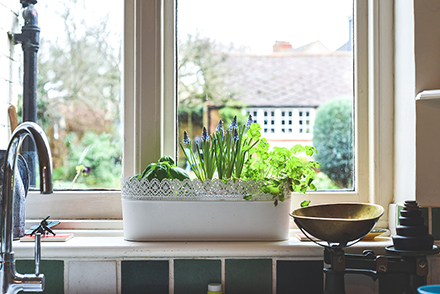Growing food at home - top tips

A bit of backyard cricket, perhaps a pool, and plenty of barbies - there are many ways in which Australians enjoy their gardens. But are we really making the most of our outdoor space, if we don't grow our own food?
We all know that 'fresh is best', and producing your own veggies might slash more money than you think from your weekly groceries. Then there is the abundance of vitamins and minerals which vegetables and fruit can offer to our diet... Are you in? Because in this article, we are going to provide some top tips for growing your own food at home.
Plan your plot - Start small and go big. That's the motto when you begin growing fruit and veg at home. It could be a few raised beds around your garden, a designated vegetable patch, or few large containers on your patio - give yourself a manageable project to start with. If you want to simplify the process as much as possible, choose a part of your garden which is close to a water supply, or your back door.
Get seasonal - you should know that veggies and fruit are seasonal, and so simply put; you should grow them at the right time of year to ensure they develop properly. That said, it should be noted that some produce can be grown outside its normal season. In spring, you could grow cabbage, artichoke, peas, beetroot, spinach and tomatoes; summer can yield carrots, melons and cumbers; cauliflower, celery, potato and pumpkin can work in the autumn; and in the winter, you could try broad beans, lettuce and broccoli. There is a lot of crossover and much can depend on where you live. Take advice from your garden centre, and just ensure you aren't growing in the wrong season.
Check your soil - even if you think you know the nature of your soil, it is always better to check. Some vegetables work better in containers or a raised bed, with added potting mix. But other vegetables - such as onions, carrots and potatoes - will grow happily in heavier soil. Grab a handful and see if it characteristically carries more soil, sand or a mixture of the two (loam). There are plenty of organic products on the market which you can use to enrich your soil, so consider adding composts and soil improvers to your soil.
- Keep it interesting - planting your favourite fruit or vegetable may seem like a good way to approach your first vegetable garden, but you might find that the process is kept a little more exciting by planting a variety. Consider planting multiple small crops and test what works, and what doesn't.
- Water at the start of the day - plants need water, some more than others, but it is common wisdom to do your watering at the start of the day. This is quite simply because when the sun is at its most intense, more of the water you use will evaporate, meaning it gets wasted. If you water late in the afternoon or evening, the foliage of your plants can stay wet overnight, and this can provide an environment that is conducive to disease.
- Be wary of the wind - ensure that your plants receive the sunlight they need without being too exposed to the wind. Strong winds could threaten the stability of your young plants. By the same token, keep them clear of any well-used paths or areas which flood easily.
We hope these tips have given you some useful considerations for setting up your home vegetable garden. Jarvis Interiors are here to provide expert advice on any facet of home design. Call us on +61 412 398 313.
